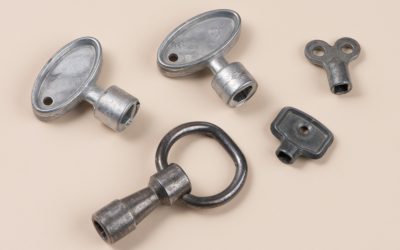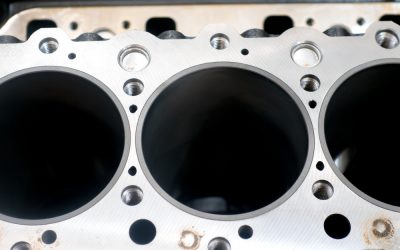Of the different metal-forming processes for aluminum, aluminum rolling is one of the most widely used, with global demand for flat-rolled products expected to increase at a CAGR of 6.5% in the coming years. And with so many applications for these products — from food wrapping to rain gutters — it’s no wonder.
If you’re curious about the various applications for flat-rolled aluminum and how the manufacturing process works, this article will explain them for you. We break the process down into three essential steps.
Table of Contents
What are the Applications for Rolled Aluminum?
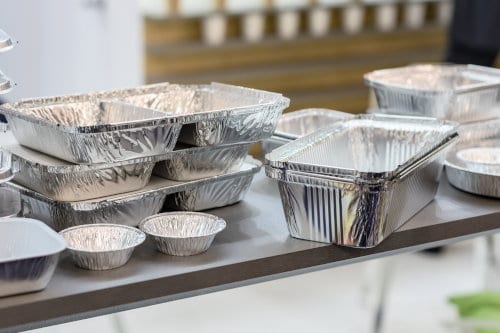
Semi-rigid containers made from rolled aluminum
Rolling aluminum is one of the major metal processes used to transform slabs of cast aluminum into a usable form for further processing. Rolled aluminum can also be the final product, for example, aluminum foil for cooking or food wrapping.
Rolled aluminum is everywhere — food and beverage companies use it to produce the aluminum cans and semi-rigid containers that come in your take-out orders. The architectural industry uses it to make aluminum roofing, siding panels, rain gutters, and anti-skid flooring. The aluminum rolling process can even produce aluminum blanks for processing into specific shapes at your factory.
How Does the Aluminum Rolling Process Work?
Step 1: Aluminum Stock Preparation
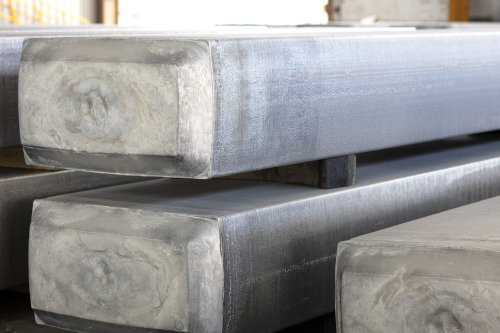
Aluminum slabs for use in the rolling process
The process starts when the rolling mill gets aluminum slabs or billets ready for rolling. Depending on the desired materials properties for a particular roll, they must first decide whether to heat the stock or not.
If they do not heat the aluminum before rolling, the aluminum will be cold worked. Cold rolling hardens and strengthens the aluminum by changing its microstructure, but it makes the metal more brittle.
If the mill heats the aluminum, this process is called hot working. The specific temperature range for hot working varies by alloy. For example, 3003 aluminum is hot worked at between 260 to 510°C (500 to 950°F), according to AZoM. Hot rolling prevents most or all work hardening and allows the aluminum to remain ductile.
Step 2: Rolling to Desired Thickness
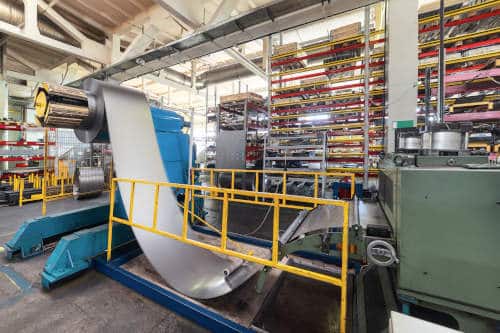
Aluminum coil on a rolling mill
When the aluminum slabs are ready, they go through several stages of roller mills with decreasing separation between them. The roller mills apply force to the top and bottom of the slab. They continue to do so until the slab reaches the desired thickness.
Depending on the final thickness of the aluminum, the resulting product will be classified in one of three ways, as defined by the Aluminum Association. Each of the three types of rolled aluminum is suited to different purposes.
No. 1 – Aluminum Plate
Aluminum rolled to a thickness of 0.25 inches (6.3 mm) or more is called aluminum plate, which aerospace companies often use in aircraft wings and structures.
No. 2 – Aluminum Sheet
Aluminum rolled to between 0.008 inches (0.2 mm) and 0.25 inches (6.3 mm) is called aluminum sheet, and many consider it to be the most versatile rolled aluminum form. Manufacturers use aluminum sheet to produce beverage and food cans, highway signs, license plates, automobile structures and exteriors, and many other products.
No. 3 – Aluminum Foil
Aluminum rolled into anything thinner than 0.008 inches (0.2 mm) is considered foil. Food packaging, insulation-backing in buildings, and laminated vapor barriers are examples of applications for aluminum foil.
Step 3: Further Processing
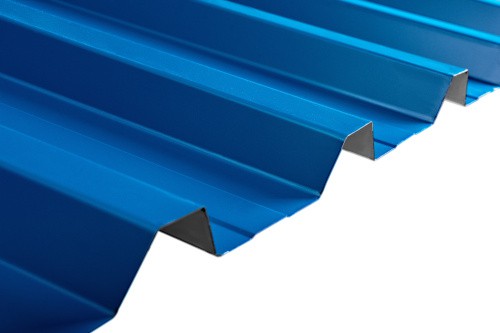
Finished aluminum roofing sheet
If required, rolled aluminum products can be further processed — blank cutting and hot forming are two of the most common types of processing. We should also note that for certain rolled geometries, like architectural siding or roofing sheets, shaping can take place as part of the rolling stage using shaped rollers.
Any required chemical or mechanical surface treatments will be applied last. These treatments change the color or finish of products, improve properties like corrosion resistance, or texturize the product’s surface. Examples of finishes include anodization and PVDF coating.
Conclusion
Rolling is one of the most versatile methods of aluminum forming, and its applications are endless. Demand for flat-rolled products is expected to continue to increase in the coming years, so it’s no wonder that aluminum product producers often consider rolling for their first processing step.
If you’re thinking about creating products from rolled aluminum sheets or foil, see the options Gabrian has for you and consider reaching out to our team of aluminum rolling experts for more information.

